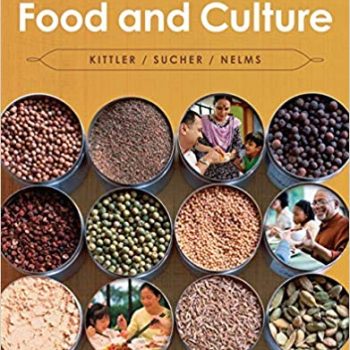What are Food and Culture?
Our food is more than just what sustains us. It can also be something much different from what we usually think of when we think of food. Food can speak to class divisions, changing tastes, and regional differences. But it can also signal a deep connection to history, culture, and national pride. Moreover, the foods represent a part of national heritage, identity, and the stories that are passed through generations.
People also connect to their cultural or ethnic groups through food patterns. Food is often used as a means of retaining their cultural identity. People from different cultural backgrounds eat other foods. The areas where families live and where their ancestors originated influence food likes and dislikes. However, these food preferences result in patterns of food choices within a cultural or regional group.
How Does Culture Impact Food?
People from different cultural backgrounds eat different foods. The ingredients, methods of preparation, preservation techniques, and types of food eaten at different meals vary among different cultures. The areas in which families live and where their ancestors originated have a significant influence on food likes and dislikes.
Connection of Food and Culture
On an individual level, we grow up eating the food of our cultures. It becomes a part of who we are. Many of us associate a specific food from our childhood with warm feelings and good memories, and it ties us to our families, holding a unique and personal value for us. Food from our family often becomes the comfort food we seek as adults in times of depression, frustration and stress.
On a larger scale, food is an integral part of the culture. Traditional cuisine is passed down from one generation to the next. It also operates as an expression of cultural identity. Immigrants bring the food of their countries with them wherever they go. In addition to this, cooking traditional food is a way of preserving their culture when they move to new places.
Importance of Food and Culture
Food plays a vital role in the lives of families in most cultures. However, the degree of importance varies from culture to culture. Understanding culture through food is an exciting process because once a person starts asking different questions about food, such as how something is made and what ingredients are in it the answers obtained go beyond the basic information about food. In these answers, food tells us something about a culture’s approach to life.
Career Growth
The food industry covers various jobs requiring unique skill sets involving attention to detail, creativity, and teamwork. The food industry provides several learning job opportunities and roles that typically don’t require extensive education to be successful. By learning about jobs in this industry, you can find a career path that aligns with your professional interests and goals.
The food industry is large and varied, with numerous jobs in service, preparation, management, and science. You can work at a bar, restaurant, catering company, or bakery. You can also get a job in food production and manufacturing companies or in food testing, to name just a few.
Test Bank Resources
Food and culture 7th Edition by Pamela Goyan gives a comprehensive study of food and culture at Test Bank Resources. The Food and culture test banks consist of multiple-choice questions that test your knowledge of the topics covered in the book. These test banks include multiple-choice questions enabling you to get through the entire course quickly.
Conclusion
We should embrace our heritage through our culture’s food, but also become more informed about other cultures by trying their foods. It is important to remember that each dish has a special place in the culture to which it belongs and is unique to those who prepare it. Food is a portal into the culture, and we should treat it as it should be.
In the end, we can say that food functions as a communicative practice through which we create, manage and share meanings with others. We can explore understanding culture, habits, rituals, and traditions through food and how others perceive it.
Showing the single result
